Überclok Ion: Midrange Overclocking, with a Warranty
by Matt Campbell on February 12, 2008 4:10 AM EST- Posted in
- Systems
System Overview
The system arrived in a plain cardboard box with the Überclok logo on the side.
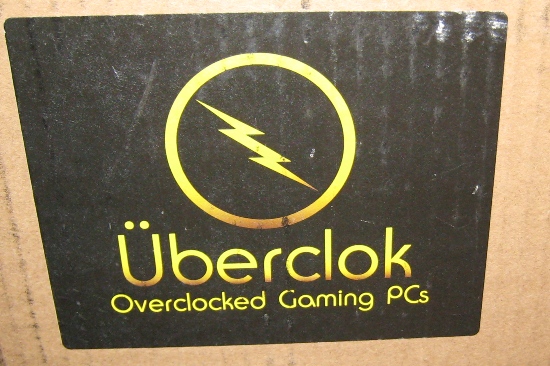
Inside, the case was well-packed, along with an accessories bag, keyboard, mouse, an owner's binder, and some good advice. The accessories bag carries extra cables, DVI-VGA adapters, and the like.

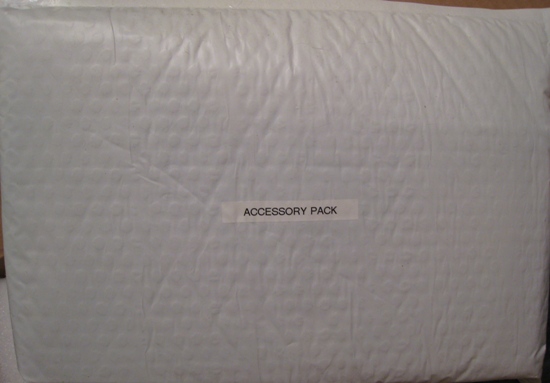
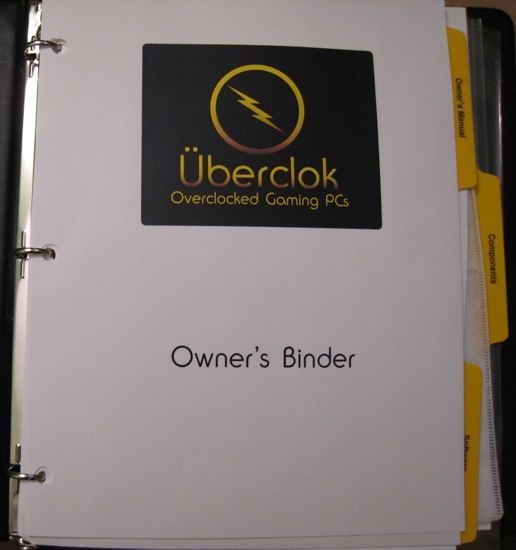
The owner's binder is well done. It includes all of the personal information on the system, such as product keys, serial numbers, etc., and manuals and CDs for all components. It also has additional information about the system itself, loaded software, and some basic troubleshooting steps.
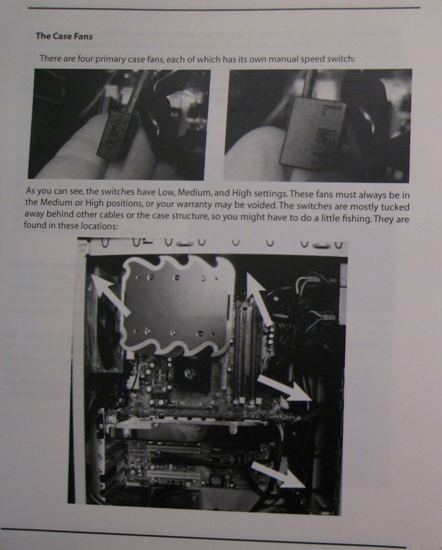

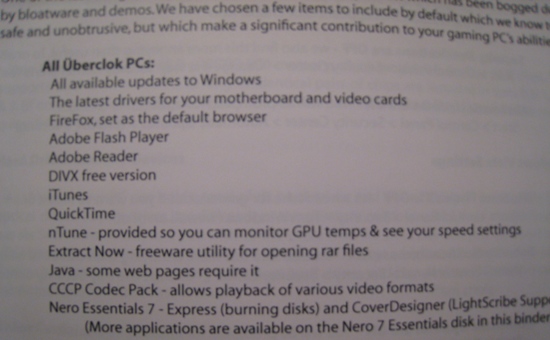
Labeled pictures of the actual case interior are included throughout. This is a very nice touch. As also seen above, Überclok warns you that overclocking beyond their limits will void your warranty. Finally, some additional installed programs are documented that actually are good additions and would not generally be considered "bloatware" (DivX, iTunes, Firefox, etc.). One thing notably missing from the Software section is a restore disk - only the O/S disk is included. Überclok informed us that they are currently working on a solution to this; once complete, they do plan to include restore disks at no extra charge. With a system of this type, we might also expect to see a few benchmark scores up front, just to give us a warm fuzzy feeling as a consumer that it has been powered up and tested prior to shipment.










38 Comments
View All Comments
Matt Campbell - Tuesday, February 12, 2008 - link
Snakeskin and zipties, plus all S-ATA drives except for the combo floppy/memory card reader, which uses a short rounded cable.JarredWalton - Wednesday, February 13, 2008 - link
FYI:The article has been updated with an enlarged image of the interior (on page 5). Click to get the large image.
chizow - Tuesday, February 12, 2008 - link
Glad to see a company using over the counter enthusiast parts for an enthusiast PC. This is a great option for those who want great performance now and future upgradability without the hassle and headache of a DIY/BYOPC. Here's to hoping they do well and last awhile!crimson117 - Tuesday, February 12, 2008 - link
I'd like to add my agreement that $400 is a great price point for a 3 year warranty, system assembly and software installation, and overclocking; and a little profit margin over their costs. You could pay close to $400 just for a warranty at other vendors, and you'd get a lot of junk installed, and it would be overclocked, and (with Dell for example) wouldn't even be overclockable or very expandable.If I were in the market for a new windows machine, I'd consider an Ion system :)
**Crimson117 Seal of Approval**
yyrkoon - Tuesday, February 12, 2008 - link
The 3 Year warranty is more like home owners insurance. They charge a flat rate to everyone, and do not 'pay-out' very often(no need if there is no problem). Of course the hardware components they've seem to have chosen all should have at least a 3 year OEM warranty, so for parts, they are not out a penny. I have not visited their website, or viewed the service policies, but I wonder how they handle part replacement in home. Dell will pay technicians such as ourselves here an hourly rate to replace parts that have gone bad in a customers PC, at their home. Well, to be more exact, a contractor will set everything up, and then contact us, etc.More likely that $400 is going to go towards customer support over the phone, or email etc.
This is actually not a bad idea, and if you choose your hardware carefully, document everything well in plain English(or whatever language), I suspect they could make a tidy profit, while keeping their customers close to 100% happy. Of course, how well they treat their customers remains to be seen.
7Enigma - Tuesday, February 12, 2008 - link
"Clearly, the 650W power supply still has a large amount of overhead. Estimating at 80% efficiency, at full load the Ion is still only using around 200W. This is good news for both stability and expansion."Uhh, 80% efficiency means it requires MORE power to supply the measured power draw. If you detected 248w at load, and the PS is 80% efficient, the Ion is using ~310w.
Great review btw, as I'm about to build my own system and its always nice to see a small new company like this come out. The first part of the review had me in a timewarp when Alienware had just came out. My dad purchased me a system for going to college from them when they were in their infancy. It came with a binder very similar to what Uberclock supplies and really made you feel like you were not getting another Dell/HP clone. I see good things for this company.....if they can get their name to come up with a search!
7Enigma - Tuesday, February 12, 2008 - link
Wanted to also mention that some of the graphs (especially the games) are confusing because its difficult to tell when you are comparing systems or just the same system at different resolutions/quality settings.ImSpartacus - Tuesday, February 12, 2008 - link
I agree, those graphs were messed up. I almost never get confused when reading an AT review.Lol, when in doubt skip to the conclusion to get a quick overview .)
JarredWalton - Tuesday, February 12, 2008 - link
Regarding power, PSUs are rated at what they can theoretically OUTPUT. Efficiency is a measure of how much power they draw from the wall vs. how much is actually passed on to components. The Kill-A-Watt devices are inexpensive tools to measure wall power draw, so if it draw 248W at load, 80% efficiency would mean that the PSU is only outputting 198W.While we do have someone that has all the necessary equipment for PSU testing, that equipment is in Europe and is prohibitively expensive. The rest of us make do with less sophisticated tools. On the other hand, knowing how much power a system really uses (at the outlet) is a useful metric, even if it wouldn't be as meaningful in a PSU review without knowing the power delivered.
7Enigma - Tuesday, February 12, 2008 - link
Ah, I now see what the author was getting at. The wording is a bit confusing though. It doesn't really matter how much the components are drawing, just how much power supply is drawing to power the components (I would omit the 200w figure).I think it might have been better worded as, "Clearly, even estimating 80% efficiency, the 650W power supply still has a large amount of overhead. This is good news for both stability and expansion."